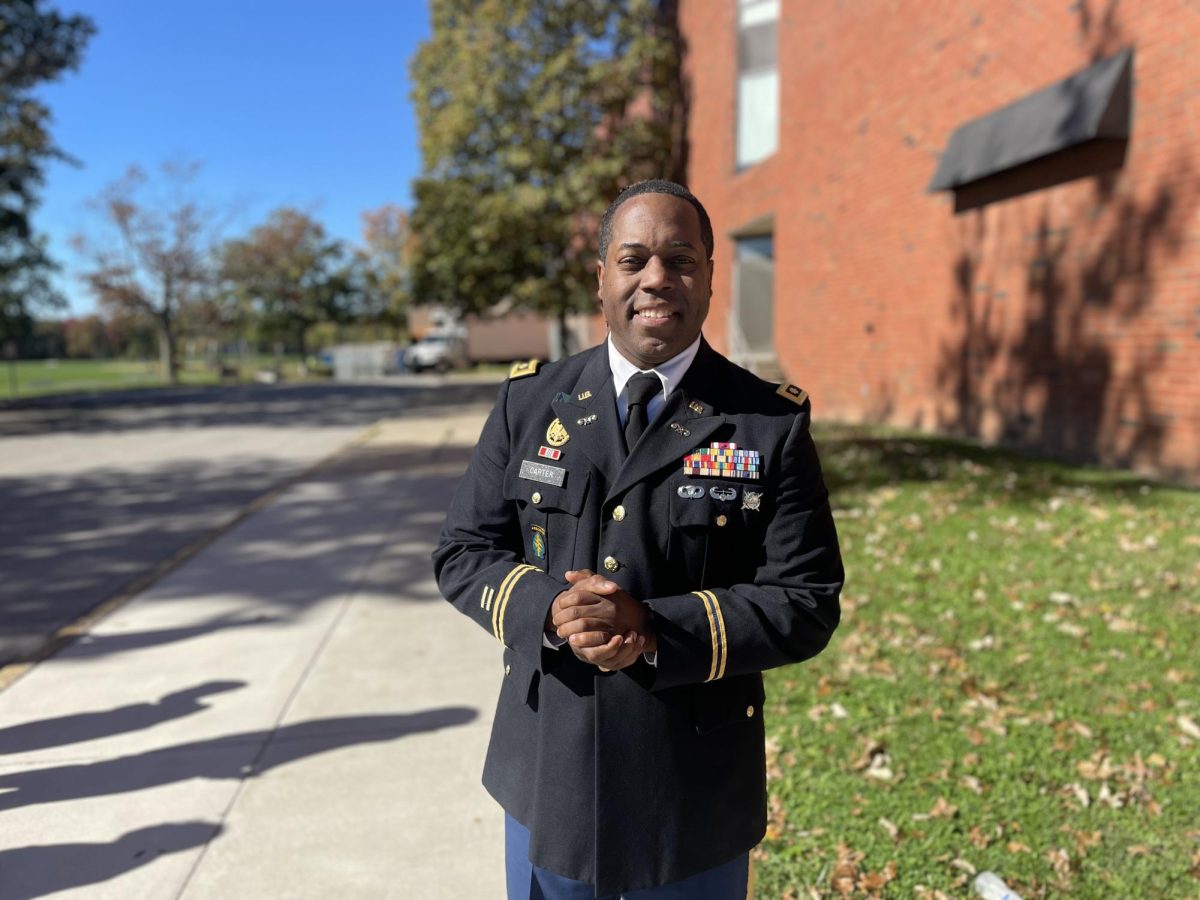“Town” Sets High Expectations, Fails to Meet Them
Theater Review
September 30, 2022
Norristown is a community known for its diversity and, in a theatrical production about Norristown, this would, without a doubt, be a great topic to celebrate. The play “Town,” which ran from Sept. 15 to 18 at Eisenhower Middle School, tried to accomplish this and honestly did not live up to expectations. The concept behind the Theater Horizon production and writer Michael John Garces’ purpose was special, but the play’s execution of this concept was not fully achieved.
Despite the play’s problems, the acting and set design were wonderful. The actors were mostly local actors who live in Norristown or have lived in Norristown. The set was an open style like the set of “Rent.” The “Rent” set famously looks like an apartment building cut in half with very little design in each room. The “Town” set was similar but meant to represent a Norristown apartment over a business.The audience could fill in the rest of the set by watching what the actors were doing. For example, a woman watching tv is shown by a woman sitting and looking at a box and reacting as if she was watching tv. This design was simple yet effective.
“Town” is about community. It is about loving where you are from and accepting the differences that come with your town. Norristown has been looked down on by neighboring towns, but “Town” wants to embrace everything Norristown has been torn down for. This play is trying to show how everyone in Norristown lives in harmony and is one big happy family.
The first act of the play starts off with dark lighting and rain sounds played over speakers with one young actor on stage. This actor introduces the setting and recites a monologue about a storm that is coming through Norristown. The storm is supposed to represent the hardship that people of Norristown have gone through and how the storm just makes the community stronger and brings everyone together. As the actor speaks, ghosts float onto stage and into the house. I am not one hundred percent sure what the ghosts represent, but I believe them to be the past that is a part of Norristown now and will continue to be a part of the town’s future.
When the show first started, it seemed like what was advertised: the important ideas that make up Norristown, such as the diversity and strength. The play walks through the original people who owned land in this area, the Lenape people. This is interesting to me and I thought that information would be incorporated into the storyline of the play, but it actually did nothing for the plot of the story and made no connection to the overall point of the play.
The scenes that were just happening with no relationships happen because they are supposed to show how the community of Norristown doesn’t always fit together, but because of the Norristown love and spirit, everything that happens in town is connected. This is not true, everyone doesn’t always get along, and everyone has their own opinions. Assuming that everyone has the same morals just because of where they are from is not something that should be done. “Town” put the people of Norristown into a box.
When the second act starts, a new actor that many thought was just another audience member jumps out of the audience and argues with another actor portraying Isaac Norris, the founder of Norristown, but not the historical one. This Isaac Norris was the figurative entity that haunts Norristown and is what keeps everyone together. This scene was powerful and made the play feel like it was coming together in sense.
However, the rest of the second act is when the plot gets hard to follow. Many actions and songs are performed without reason and don’t connect. A few new characters are introduced, and one is new to Norristown. The character new to Norristown is trying to find somewhere to eat and all of the ensemble stars recommending places to eat and even argue over which place is better. An unnecessary statement was made when the actors compared diversity to Zeps not having lettuce.
The rest of the play was scattered and felt rushed to an ending. Random people would run up on stage and yell whatever their heart felt like without even worrying about the storyline. Then, at random points, the characters would break out into song. Now, if this was a musical, the songs would move the story along, but these songs had little to no meaning and just ended up leaving the audience more confused.
The sense of the stereotypical “happy family” is a theme that is felt throughout “Town”. When many of the characters interact, they have this sort of happiness about them throughout everything. There is very little conflict, and the minor conflicts that are present do get resolved with a hug and a smile. Since there is no major conflict, the play seems flat, almost like a kids cartoon.
There were some parts of the play I did enjoy. There were times when there would be one conversation but the two actors talking would be speaking in different languages. This was one aspect that I thought really showed the diversity that Norristown truly is. Not everyone speaks the same language, but there is still community.
Overall, “Town” had some highlights, but the good parts do not outweigh the negative aspects of the play. The concept was to have Norristown as a “happy family” but at the end of the day everyone is different, and being a family isn’t perfect. “Town” depicts Norristown as a perfect place but in reality “perfect” doesn’t exist. The play could have appreciated the different parts of Norristown by including more of its imperfections.



